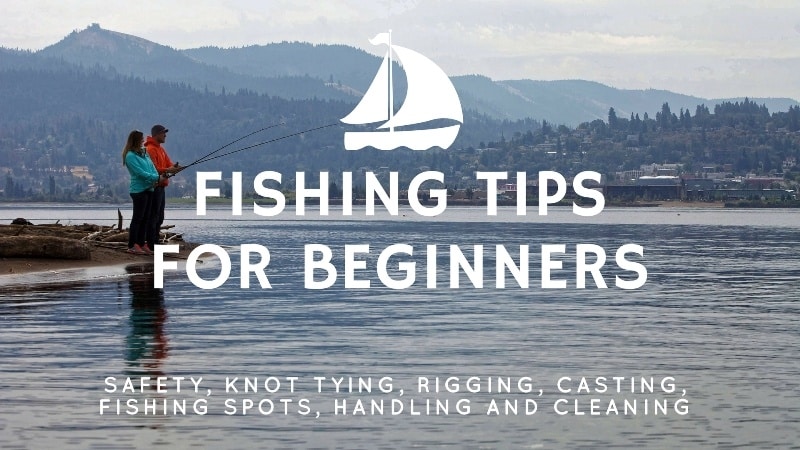Fishing kayaks are different than touring or recreational kayaks. A fishing kayak is way more convenient to use. Unlike recreational kayaks, fishing kayaks are stable enough for a wholesome experience. Another important difference is that other kayaks are not well equipped enough to mount rod holders or other fishing gear. But fishing kayaks have storage areas for rod, reel, tackle, and bait.
Fishing kayaks are also easier to transport, and maintain, and offer better stealth. Additionally, the good ones contain enough space to stand in and have better seating. In this article, we will help you learn how to choose a fishing kayak.
How Much do Fishing Kayaks Cost?
Cost is always one of the most important considerations. How much you are willing to spend is one of the greatest factors determining what you are going to buy and it is the same as buying a kayak. It is unnecessary to say that better kayaks cost more. You can get the most basic kayak for around $200, while the better ones cost around $600.
Fishing kayaks are more cost-effective as compared to buying a motorboat. Most buyers are able to find good kayaks as per their needs within this range. Although there are fishing kayaks which cost as much as $1000. Polyethylene sit-on-top kayaks are usually the cheapest and need about 2-3 days to build. Composite kayaks, preferred by advanced paddlers, cost almost double.
Now, let us look at the different types of fishing kayaks. But whichever type of kayak you choose, don’t forget to wear a personal flotation device. Get yourself an inflatable life vest for safety while fishing from a kayak.
Different Types of Fishing Kayaks
Sit-on-Top Kayaks
Unlike sit-in kayaks, sit-on-top kayaks lack an enclosed cockpit. The sit-on-top kayaks have drain holes in the bilge which allows water entering the cockpit to escape. Most sit-on-top kayaks come with a double-hull construction. These kayaks have an enclosed air space between the two hulls, making them almost unsinkable.
Molded polyurethane plastic used for making most sit-on-top kayaks is tough but heavy. Sit-on-top kayaks are wider and have a higher degree of initial stability. The length varies from 10 to 16 feet. Sit-on-top kayaks are the most popular type of fishing kayaks.
Sit-in Type Kayaks
The sit-in-type kayaks are good for sheltering your lower body from the wind and water. Thus sit-in-type kayaks are great for paddlers who plan to fish in cooler waters. Sit-in-type kayaks can help you stay dry as well as warm while fishing. Also, they have large cockpits that are suited for storage.
But, these kayaks don’t offer the freedom to move in and out of the kayak as and when you want. And if you flip for some reason, the water would most likely enter the kayak. Water entering the kayak would make a recovery difficult for most beginners. Thus, you can use these kayaks for fishing in stagnant waters. Stagnant waters are sure to be cold but not have enough waves to flip your kayak.
Pedal Drive Kayaks
The pedal drive kayaks are suitable for areas where you need to travel long distances to reach the fishing area. The pedal drive allows you to keep your hands free paddling. Which is great for beginners. With your hands now free of paddles, you can move around and put your Best Beginner Fishing Rod and Reel Combo to better use. The pedal drive is one of the most innovative ideas which helps fishing even in faraway waters.
How to Choose a Fishing Kayak
Primarily, where will you be fishing and how far would you be traveling affects your choice of kayak. There are other features also to be considered such as stability, size, maneuverability, etc. Let us now look at all the features which will determine your choice of fishing kayak.
Fishing on Still or Moving Water
One of the first things to consider is whether you would be fishing on still water or moving water. Still water could be anything from a small pond to the largest of lakes. If you would be fishing on a small water body then you should go for a kayak that has a high degree of initial stability.
But if you would be fishing on a large lake, then you may need to travel a bit to reach the prime fishing location. This requires faster travel rather than ease of maneuverability. In such cases, you should go for long, slim, and fast kayaks with a lower degree of initial stability.
When fishing on moving water, you need to deal with the water current that may propel your kayak backward or forwards. There is also a need to manage any water obstacles that may surface. Thus, keeping maneuverability in mind you should choose a short and wide kayak, with a higher degree of secondary stability and rocker.
Inshore or Offshore Fishing
If you wish to try out saltwater fishing, then you need to consider the depth of the water while choosing your kayak. Inshore waters usually have depths of 70 feet or less. The paddlers face significant distances with stiff winds and waves. Thus long, slim kayaks with a moderate degree of rocker are best suited for inshore waters. Look for kayaks with good secondary stability and efficient hull design.
When fishing inshore, most fishermen prefer sit-on-top kayaks as they are difficult to sink. Also, a sit-on-top kayak is easier to re-enter even if it capsizes. If you are using one of the Best Spinning Rods Under $50, you will benefit from additional space offered by sit-on-top kayaks.
Offshore waters generally mean oceans and seas. Fishermen usually face adverse conditions such as high winds and stiff waves while fishing offshore. As conditions are quite similar to inshore fishing, you may go for a kayak with a similar structure. Long, slim kayaks with a moderate degree of rocker are the best for this type of fishing. Choosing a kayak that is a little longer would make you feel more secure.
Initial Stability and Secondary Stability
Initial stability is the measure of how the kayak feels when sitting upright on the keel. Wider kayaks have a higher degree of initial stability while narrow kayaks have a lower degree of initial stability. Also, in general, soft-chined kayaks have a higher degree of initial stability. While the hard-chined kayaks have a lower degree of initial stability.
Secondary stability is used to measure the feel of the kayak when leaned onto one of its sides. Narrow kayaks have a higher degree of secondary stability while wide kayaks have a lower degree of secondary stability. Also, soft-chined kayaks have a lower degree of secondary stability and hard-chined kayaks have a higher degree of secondary stability.
Length and Width
A kayak with a longer hull would be faster than a shorter kayak of the same width. This is because longer kayaks have a longer waterline length. But, the longer kayaks are less maneuverable than the shorter kayaks.
Although wider kayaks are slower, they have higher initial stability. Thus shorter kayaks are very stable on flat water but not suitable for rough seas. Longer kayaks with a higher degree of secondary stability can handle rough seas better.
Maneuverability and Tracking
‘Rocker’ is a measure of how much the hull of the kayak curves up from the center to the ends of the hull along the keel. Thus kayaks with a low degree of rocker are straighter along the keel. Kayaks with a high degree of rocker are more curved along the keel.
Kayaks that have a low degree of rocker are able to track better but are difficult to turn. But those with a high degree of rocker are easy to maneuver but do not track as well. Also, the kayaks with a lower degree of rocker are slower due to the higher surface area while the ones with a high degree of rocker are faster.
Your Skill Level
Your skill level is an important factor when choosing a fishing kayak. For beginners, it is a good idea to start fishing on still waters with freshwater equipment such as the Best Walleye Rods. Thus beginners should go for a kayak that has a high degree of initial stability. These are easy to maneuver and make you feel secure. Sit-on-top kayaks are suitable for novice fishermen on still water.
Type of Construction
The type of construction also matters. Polyurethane kayaks are heavier, but tougher and are very good for fishing along rocky shorelines. Wood or composite kayaks are slower and need more effort to paddle. But, they also are much less expensive.
Outfitting a Fishing Kayak
Paddle
A paddle is needed to propel the kayak. You can paddle a kayak even with a single blade, but double blades are more effective. Double-bladed paddles are available in different lengths and different shapes and sizes of the blades.


Paddle Park
The paddle park is a plastic clip that mounts to the deck. The paddle park allows you to clip the paddle so that it can be securely held out of the way while fishing.
Rod Holder
A rod holder is designed to provide a handy place to put your fishing rod while changing lures or bait or while handling a fish. Rod holders allow the rod to be placed at arm’s length in front of the paddler. It might be easier to fish with the Best Telescopic Fishing Rod while fishing from a kayak.
Tackle Storage
The tackle storage is used for storing basic fishing tackle in the kayak so that the tackle can be easily retrieved.
Conclusion
Many fishing kayaks come with pre-outfits such as cooler wells, bait wells, rod holders, rod racks, paddle parks, and anchor trolleys. Thus, it is a good idea to consider pre-outfits while choosing a kayak for fishing. While such pre-outfits are good, they are not a must. These outfits can easily be added to any fishing kayak with little effort.
We hope this article helps answer the question: How to Pick a Kayak for Fishing. You can use this knowledge to choose the right fishing kayak.
Last Updated on May 15, 2025 by Victor Mays






